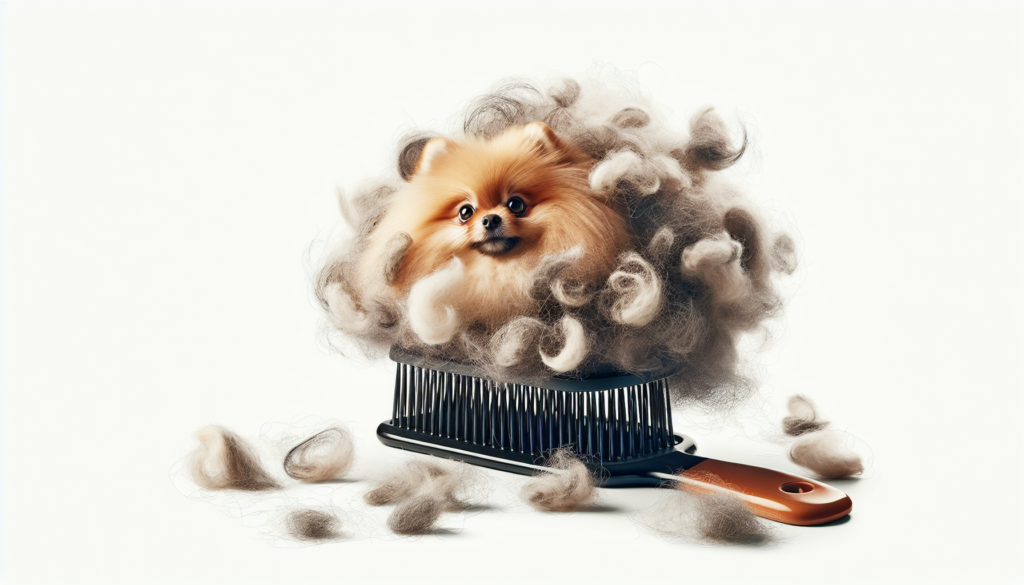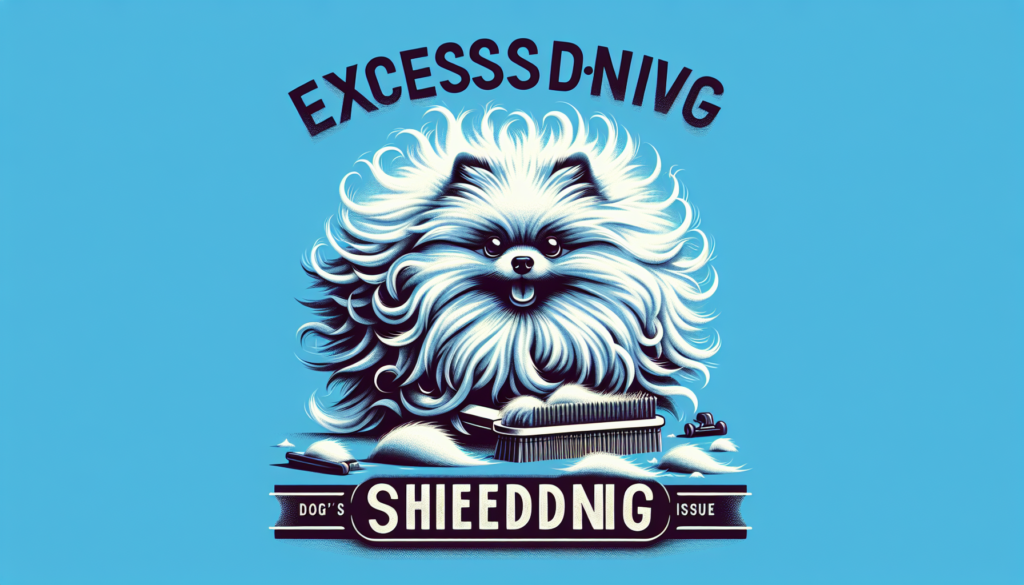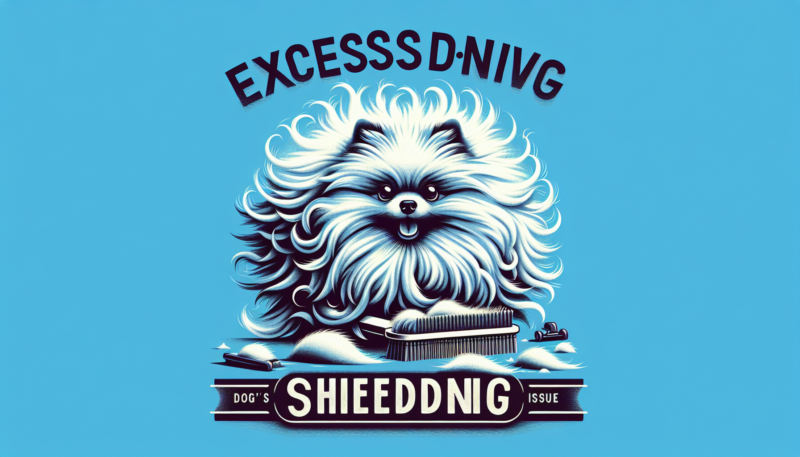If you have a Pomeranian and you’ve noticed that their shedding has become unmanageable, you may be wondering why this is happening and what you can do to address it. In this article, we’ll explore the reasons behind excessive shedding in Pomeranians and provide some insights into how you can effectively manage this issue. Additionally, we’ll touch upon the unique shedding characteristics of Pomeranians in comparison to other breeds, such as the Great Dane. So, if you’re tired of constantly finding fur all over your home, keep reading to discover the reasons behind your Pomeranian’s excessive shedding and how you can help minimize it.
Common Causes of Excessive Shedding
Excessive shedding can be a concern for dog owners, as it often leads to a furry mess all over your furniture, clothes, and home. If you find yourself constantly dealing with piles of dog hair, it’s important to understand the common causes behind this issue. By identifying the underlying reasons, you can take appropriate actions to manage and reduce your dog’s shedding. Here are some common causes of excessive shedding in dogs.

Seasonal Shedding
One of the most common causes of excessive shedding is seasonal shedding. Many dog breeds naturally shed their fur during specific times of the year, commonly known as “blowing the coat.” This shedding process helps dogs adapt to temperature changes and prepares them for different seasons. Breeds like Great Danes shed heavily during spring and fall, while Pomeranians are more prone to seasonal shedding during fall and winter. Keep in mind that while seasonal shedding is completely normal, some dogs may experience more intense shedding than others.
Stress or Anxiety
Just like humans, dogs can also experience stress and anxiety, and it can manifest in various ways, including excessive shedding. Environmental changes, separation anxiety, loud noises, traumatic events, illness, injury, or the introduction of new additions to the household can all cause stress and anxiety in dogs. When dogs are stressed or anxious, they may shed excessively as a physical response to their emotional state. It’s vital to identify and address the underlying causes of stress to help reduce shedding and improve your dog’s overall well-being.
Allergies
Allergies, both food and environmental, can lead to excessive shedding in dogs. Food allergies occur when a dog’s immune system overreacts to certain ingredients in their diet. Environmental allergies, on the other hand, can be triggered by pollen, dust mites, mold, or other substances present in the dog’s environment. Contact allergies, such as reactions to certain grooming products or fabrics, can also cause excessive shedding. If your dog has allergies, they may scratch, lick, or bite affected areas, further exacerbating the shedding problem.
Skin Infections
Skin infections, such as bacterial, fungal, or yeast infections, can contribute to excessive shedding in dogs. These infections can cause inflammation, itchiness, and discomfort, leading to increased scratching and, consequently, shedding. Bacterial infections may result from underlying skin conditions or poor hygiene, while fungal and yeast infections may occur due to imbalances in the skin’s natural flora. If you notice redness, irritation, or a foul odor coming from your dog’s skin, it’s essential to consult with your veterinarian for proper diagnosis and treatment.

Parasites
Parasites like fleas, ticks, and mites can cause significant irritation and discomfort for dogs, leading to excessive shedding. Fleas are notorious for causing itchiness and hair loss, as they bite and feed on your dog’s blood. Ticks can transmit diseases and cause skin irritation, while mites, such as mange mites, can cause severe itching and hair loss. It’s crucial to regularly check your dog for signs of parasites and take preventative measures to keep them at bay. Consult with your veterinarian to determine the best parasite prevention and treatment options for your dog.
Hormonal Imbalance
Hormonal imbalances can also contribute to excessive shedding in dogs. Thyroid issues, such as hypothyroidism or hyperthyroidism, can disrupt the normal functioning of the thyroid gland and affect the growth cycle of your dog’s hair. Cushing’s disease, a condition characterized by excessive production of cortisol, can also lead to increased shedding. Additionally, pregnancy or lactation in female dogs can cause hormonal changes that impact their hair growth cycle. If you suspect a hormonal imbalance in your dog, consult with your veterinarian for proper diagnosis and management.
Poor Diet
A poor diet lacking essential nutrients can lead to unhealthy skin and coat in dogs, resulting in excessive shedding. Essential nutrients, such as Omega-3 fatty acids, vitamins, and minerals, play a vital role in maintaining a healthy coat and preventing excessive shedding. Food allergies can also contribute to shedding, as dogs may have reactions to certain ingredients in their diet. Furthermore, feeding low-quality dog food that lacks proper nutrition can contribute to poor skin and coat health. Consult with your veterinarian to ensure your dog is on a balanced diet specifically tailored to their nutritional needs.
Dry Skin
Dry skin is a common culprit of excessive shedding in dogs. Lack of moisture in the skin can cause itchiness and irritation, leading to scratching and shedding. Environmental factors like cold weather, low humidity, or excessive bathing can strip the skin of its natural oils, resulting in dryness. Ensuring your dog’s skin is adequately moisturized and protected is crucial in reducing shedding caused by dry skin. You can use moisturizing shampoos, conditioners, and supplements recommended by your veterinarian to improve your dog’s skin health.
Underlying Health Issues
Some underlying health issues can contribute to excessive shedding in dogs. Conditions like hypothyroidism, food allergies, skin infections, or autoimmune diseases can all affect the skin and coat, resulting in abnormal shedding patterns. If you notice excessive shedding along with other concerning symptoms, such as weight loss, lethargy, or changes in appetite, it’s essential to seek veterinary attention. Early diagnosis and proper treatment of any underlying health issues can help alleviate shedding and improve your dog’s overall health and well-being.
Over-grooming
Believe it or not, excessive grooming can actually lead to excessive shedding in dogs. Some dogs may develop a compulsive behavior of over-grooming themselves, known as psychogenic alopecia. This excessive grooming can cause damage to the hair follicles, leading to hair loss and increased shedding. Over-grooming can be triggered by stress, anxiety, boredom, or even medical conditions. Identifying the underlying cause and addressing it through behavior modification, environmental enrichment, and potential medical intervention can help reduce over-grooming and excessive shedding in your dog.
By understanding the common causes of excessive shedding in dogs, you can take proactive measures to manage and minimize shedding in your furry friend. Regular grooming, a balanced diet, proper hygiene, parasite prevention, and addressing any underlying health issues are essential steps to helping your dog maintain a healthy coat and reduce shedding. If you have concerns about your dog’s shedding, consult with your veterinarian for personalized advice and recommendations. Remember, shedding is a natural process, but excessive shedding may indicate an underlying problem that needs attention.
